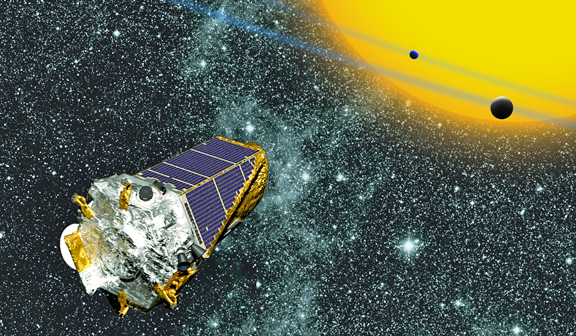The information regarding the previously announced Kepler spacecraft emergency that occurred last week has been updated by Charlie Sobeck, the Kepler and K2 mission manager at NASA's Ames Research Center.
The Kepler spacecraft has been successfully recovered from that problem... on Sunday morning, Kepler reached a stable state and the antenna once again pointed toward Earth. That correction enable telemetry and historical data event data to be downloaded to the ground receiving station. Kepler continues to operate in the lowest-burn fuel mode, as well. This correction also means that the Deep Space Network ground comms can now return to normal scheduling.

Artistic rendition of Kepler and K2.
As the Kepler data is received by the ground, all of the on board systems will be thoroughly examined to make certain the spacecraft can return to science mode. If that becomes reality, then the K2 mission's microlensing observing campaign, called Campaign 9, will continue until the mission's scheduled completion on July 1st. The observatories on Earth that are participating in this mission will continue to make their observations as the health checks continue.
The anomalous EM event was the first such occurrence that the Kepler spacecraft encountered during seven years in space. Mission operations at NASA's Ames Research Center in California's Silicon Valley, Ball Aerospace and the Laboratory for Atmospheric and Space Physics at the University of Colorado in Boulder remain vigilant for any untoward activities aboard Kepler. The hard work of the engineers over the past weekend led to the recovery as well as the support from NASA's Deep Space Network, which is managed by the Jet Propulsion Laboratory, and to other NASA missions that surrendered their scheduled telemetry links to provide the resources required to protect the Kepler spacecraft.


